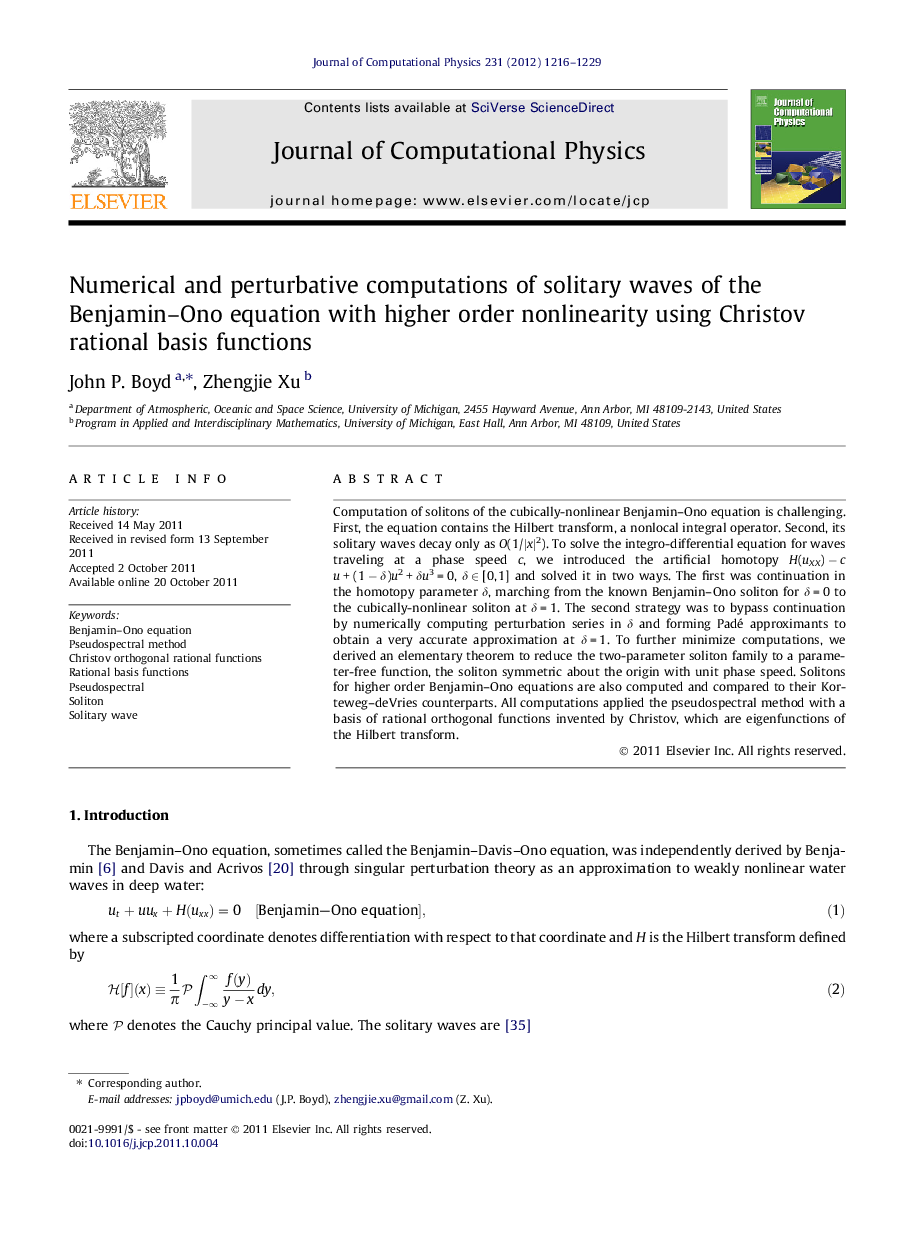| Article ID | Journal | Published Year | Pages | File Type |
|---|---|---|---|---|
| 519123 | Journal of Computational Physics | 2012 | 14 Pages |
Computation of solitons of the cubically-nonlinear Benjamin–Ono equation is challenging. First, the equation contains the Hilbert transform, a nonlocal integral operator. Second, its solitary waves decay only as O(1/∣x∣2). To solve the integro-differential equation for waves traveling at a phase speed c, we introduced the artificial homotopy H(uXX) − c u + (1 − δ)u2 + δu3 = 0, δ ∈ [0, 1] and solved it in two ways. The first was continuation in the homotopy parameter δ, marching from the known Benjamin–Ono soliton for δ = 0 to the cubically-nonlinear soliton at δ = 1. The second strategy was to bypass continuation by numerically computing perturbation series in δ and forming Padé approximants to obtain a very accurate approximation at δ = 1. To further minimize computations, we derived an elementary theorem to reduce the two-parameter soliton family to a parameter-free function, the soliton symmetric about the origin with unit phase speed. Solitons for higher order Benjamin–Ono equations are also computed and compared to their Korteweg–deVries counterparts. All computations applied the pseudospectral method with a basis of rational orthogonal functions invented by Christov, which are eigenfunctions of the Hilbert transform.
